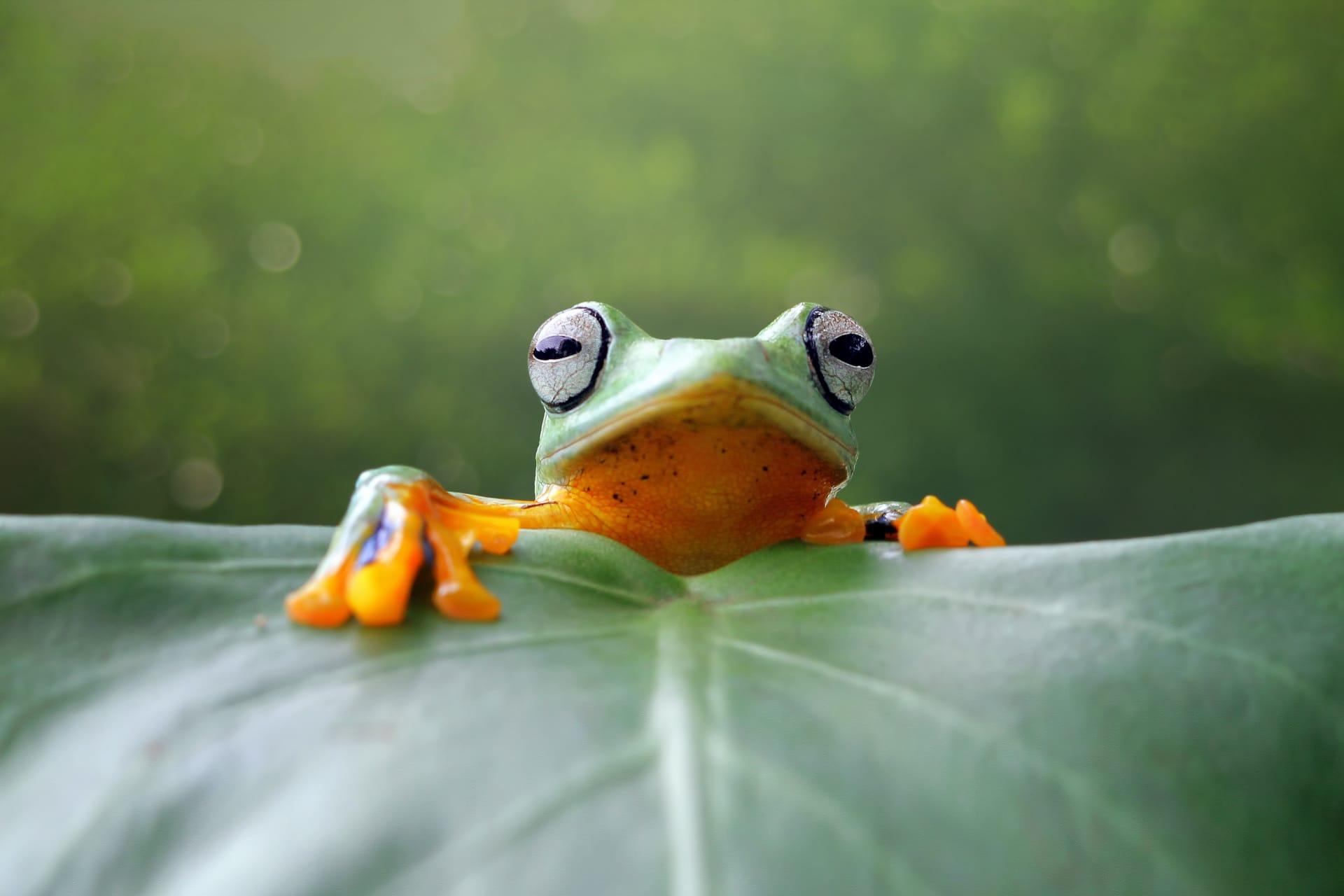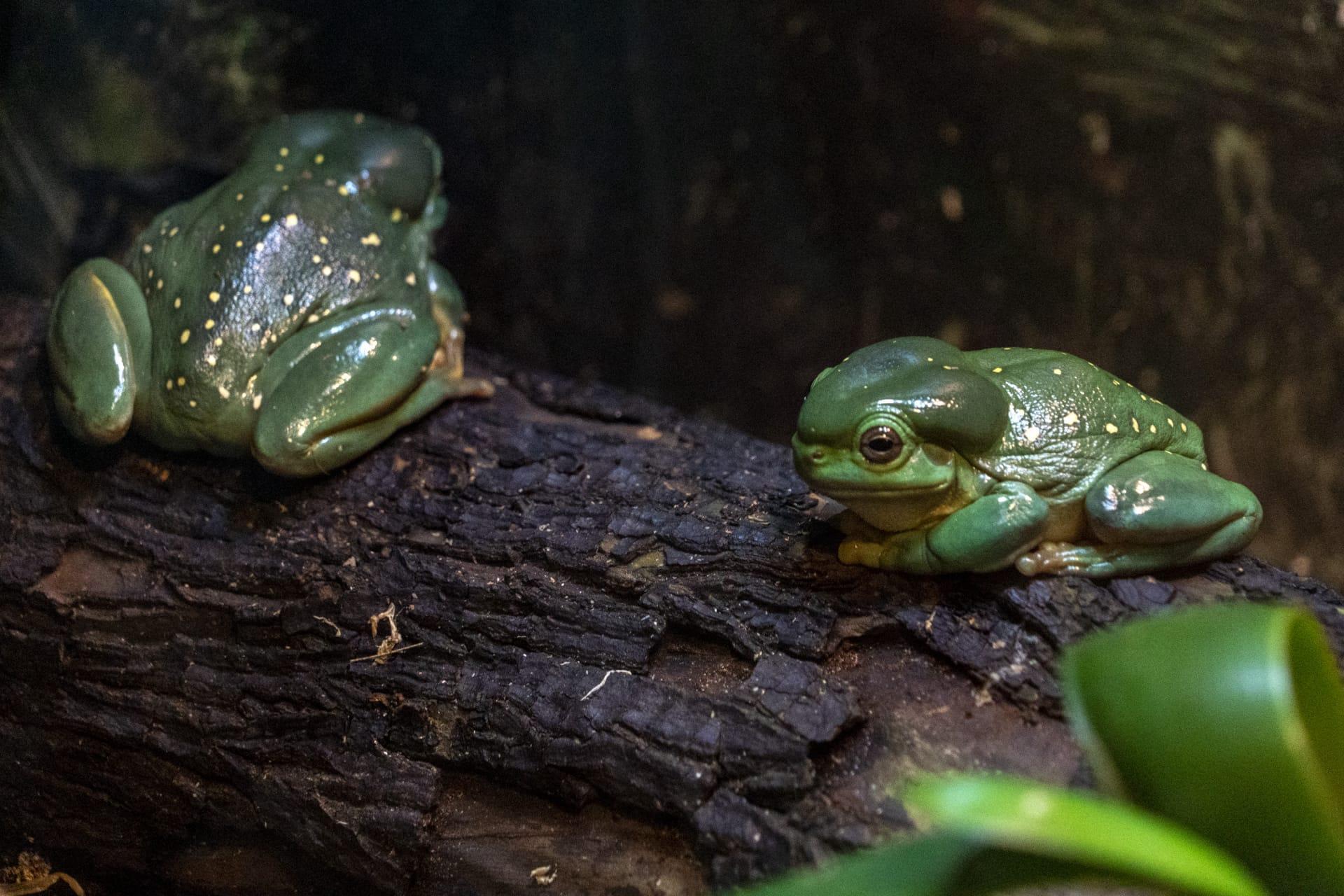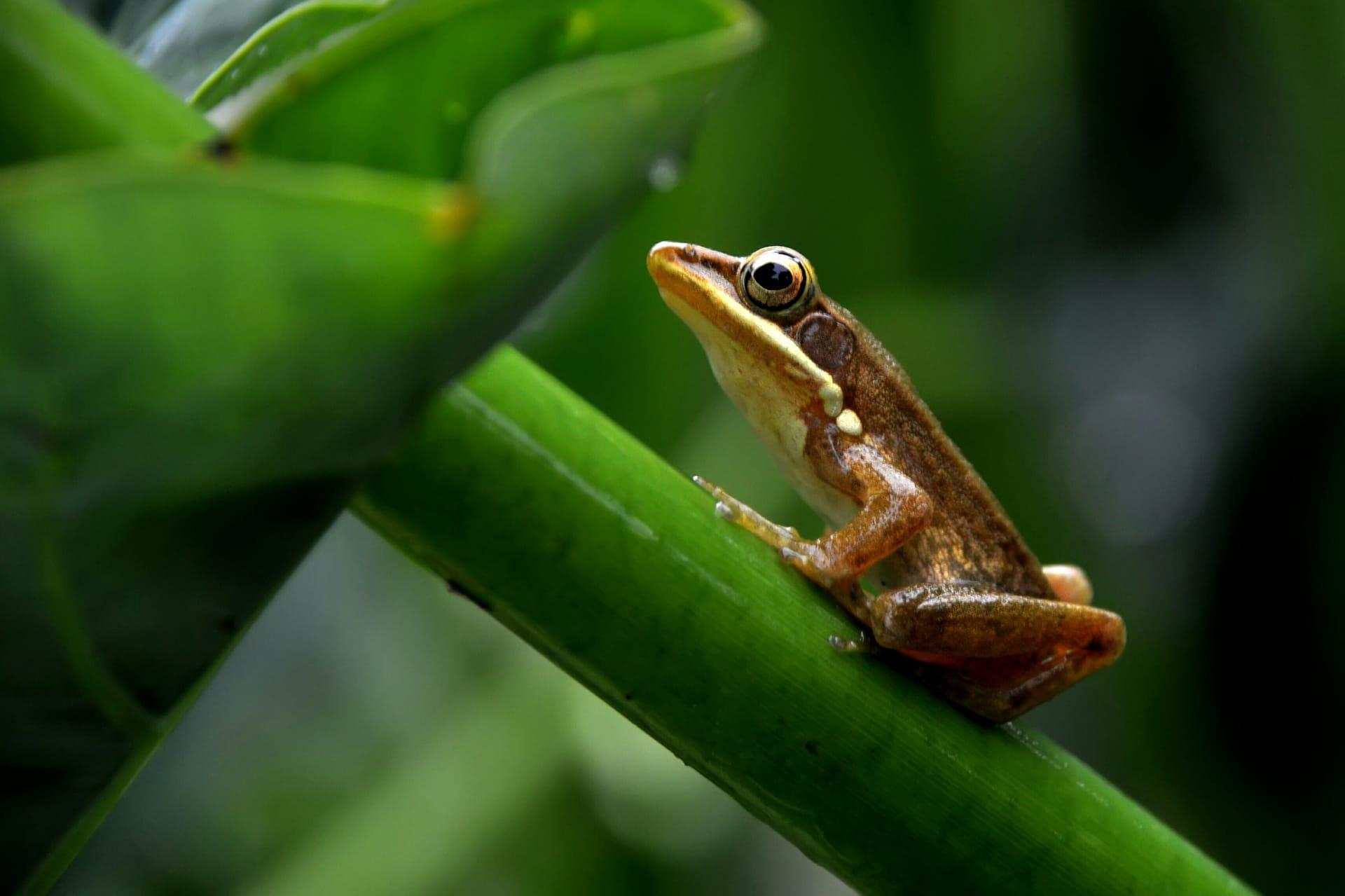Frog Characteristics
- Home /
- Mini Encyclopedia /
- Animal /
- Frog Characteristics
1
Frogs, fascinating creatures, are known for their remarkable variety in size. Some species like the Goliath frog can grow up to 32 centimeters in length, while the tiny Paedophryne amauensis barely reaches 7.7 millimeters. Typically, frogs weigh about 22 grams, but this varies widely among species. Lifespan is another intriguing aspect. While many common frogs live for about 10 to 12 years, the European common frog can live up to 40 years, showcasing their resilience.
One of the most distinctive organs of a frog is its skin. Unlike other animals, a frog's skin plays a crucial role in its respiration, a process known as cutaneous respiration. This unique adaptation allows them to absorb oxygen directly through their skin, which is vital for survival in aquatic environments. Furthermore, their skin contains mucous glands that keep it moist, aiding in this breathing process and also making their skin a barrier against bacteria and injury.

2
Question: Can frogs change color, and if so, how?
Answer: Yes, frogs can change color, and they do this through special cells in their skin called chromatophores. These cells contain pigments and reflect light in different ways, causing the frog's skin to change colors. This ability helps them adapt to different environments, hide from predators, or regulate their body temperature. The extent and speed of color change vary among species, but it's a common ability in many frog species.

3
Frogs are renowned for their impressive jumping abilities. They have long, powerful hind legs and a unique skeletal structure, enabling them to leap distances over 20 times their body length. This ability is not just for mobility; it's also a defensive mechanism to quickly escape predators. The world record for the longest frog jump is 7.2 meters, achieved by a South African sharp-nosed frog.
As predators, frogs have several interesting features. Their tongues are fast and sticky, perfect for catching prey like insects, spiders, and even small mammals. A frog's tongue can dart out and capture prey in less than a second. They have excellent night vision, which aids in hunting during the darker hours. Frogs also use their acute sense of hearing to detect prey and predators, making them efficient nocturnal hunters.

4
Frogs inhabit a wide range of environments, from tropical rainforests to arid deserts. They require a moist environment to survive, hence they are commonly found near water bodies like ponds, lakes, and rivers. Some species, like the Wood Frog, have adapted to colder climates and can even survive being frozen during winter.
Reproduction in frogs is as fascinating as their habitats. Most frogs lay their eggs in water. These eggs hatch into tadpoles, which undergo metamorphosis to become adult frogs. This transformation involves significant changes, like developing lungs for breathing air and legs for hopping. The time taken for a tadpole to transform into a frog varies, but it usually spans from a few weeks to several months.

5
Book: "Frog: A Photographic Portrait" by Tom Jackson. This visually stunning book, published in the United States in 2020, offers a vivid portrayal of various frog species through high-quality photographs. Jackson's work not only showcases the beauty of these amphibians but also highlights their diverse habitats and behaviors.
Book: "The Secret Life of Frogs" by Michael J. Tyler. Published in the UK in 2009, this book delves into the intriguing world of frogs. Written by renowned biologist Tyler, it explores their lifecycle, unique adaptations, and the challenges they face in the modern world. The book is praised for its comprehensive yet accessible approach to frog biology.